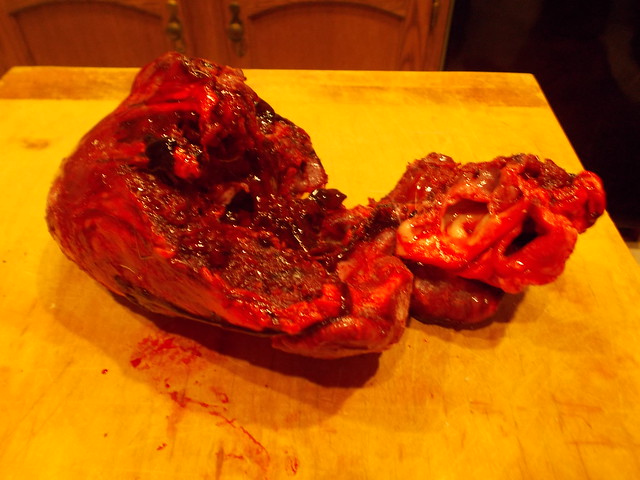I don't like that shot either. Go for lungs and it's not going far.
I used to think that, but I've found that when you engage a deer, especially a buck that has been spooked within the last 10 minutes or so..., they can go very far.
The last buck that I harvested was pushed over onto the farm where I was hunting because of a pack of hounds and fox hunters. He came over to my side of the roadway, and apparently slowed down, but you could still hear the fox hounds and the guy on the horse with that tiny horn that they use...,
So the buck fast-walked up a hill through a wood lot (where I was located), pushing four doe in front of him. I saw the doe first, and set up ready to take one, when he came up behind them. He was almost running and it might've been a tricky shot, but all of a sudden he stopped, broadside to me at 60 yards, and looked back over his shoulder at the other farm where the guy with the tiny horn was a blowin' a signal.
[Thank you God!] I moved my sight picture a little to my left, onto the buck's lung area, and squeezed off a shot.
BANG!
So through the smoke I saw him stumble, then trot over a little rise behind him where the woods opened into a field. The rise had served as a backstop. I expected to find him just over that rise. I reloaded, and then waited 20 minutes. I then headed out to collect my deer.......,
...'Cept he wasn't there. the grass was ankle high, and he was nowhere to be seen. There was a shed about 40 yards beyond, so I figured he went behind that and I checked. Nope..., not there, and no blood trail. So I picked up on the path the doe took, and figured they'd be near him and not too far away. Found them 200 yards away, but not the buck. When I was headed back to "start from the top" I spotted his tail. He was lyin down behind a tiny bush, and I figured I must've poorly placed my shot for him to be down 100 yards from where he was hit.
As I field dressed him I found my .530 round ball had smashed through a rib, shattering it and the bone fragments had caused lung damage as well as the ball, then the ball exited by passing between two ribs and out the other side. Lungs were chewed to bits, but..., all that left-over adrenaline and he could still go. That's the farthest I've ever had a deer go when hit in both lungs with an entry and exit wound.

LD










